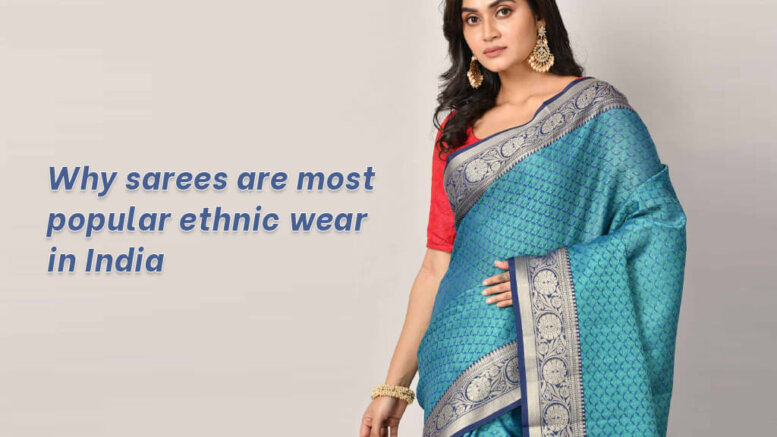Indian sarees popularity:
Traditional forms and styles are globally adopted, and new designs are regularly created to entice style-conscious women all across the world. People are exploring fresh design statements about this Indian garment, and saree have made great inroads into the fashion world today. Thanks to the incredible workmanship and artistic delicacy demonstrated by trained professionals working tirelessly to create sarees better than ever before, saree fans today have a variety of interesting options in ethnic wear in India.
The saree features a petticoat for the lower half of the body, which helps to tuck in the pleats of the sarees to keep it in place when worn with a blouse covers the upper part of body. Saree have gained international acclaim in recent years as a result of their widespread popularity.
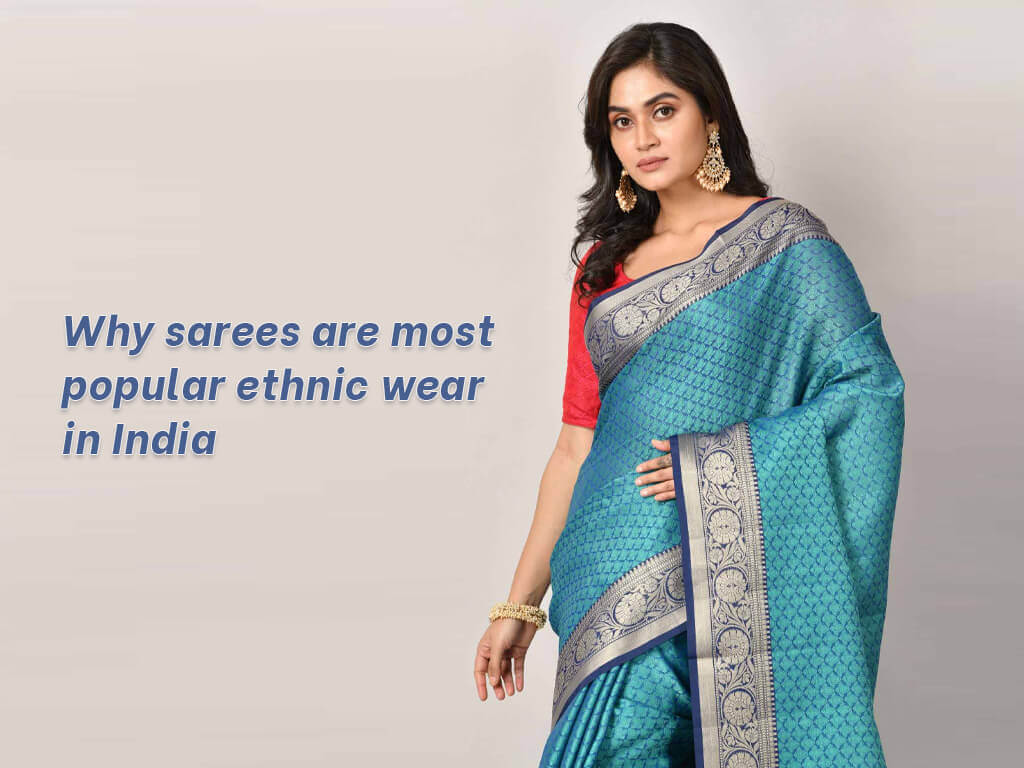
It’s the ideal outfit for individuals who wish to enhance their sense of elegance and grace.
Most popular ethnic wear in India :
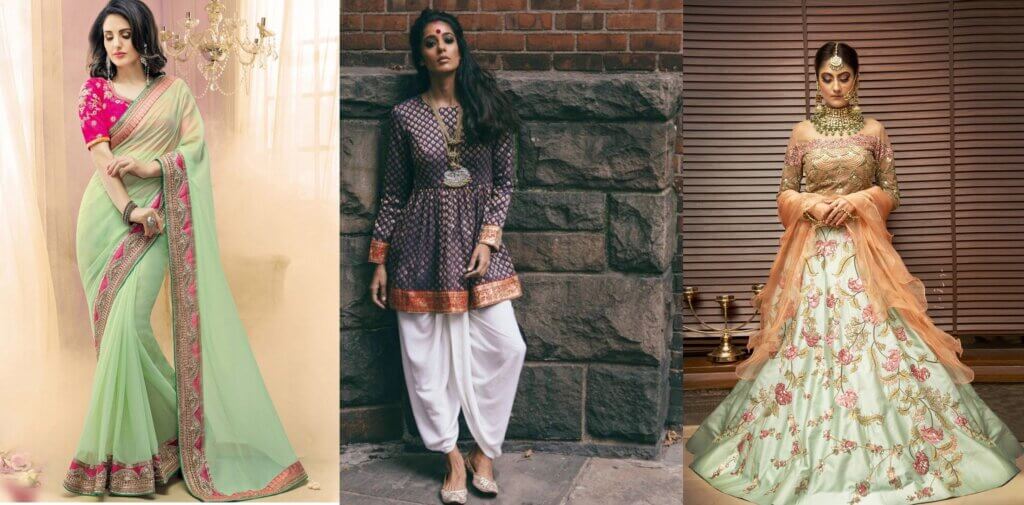
India is a country with many languages, various traditions, a wide range of clothing, and numerous ways of worshipping God. “India has maintained its identity despite having various protocol and traditions.” Even though there is a significant variety of diversity in beliefs, languages, clothing, and rituals, there is an underlying connecting connection that binds India as a whole. There are lots of choices available for ethnic wear in India.
India’s strength stems from its willingness to accept the finest of foreign influences and incorporate them into its already diverse cultural heritage. The evolution of the India traditional dress known as the ‘saree’ or’ sari’ exemplifies this facet of the Indian cultural set-up of ethnic wear in India.
Saree have traditionally been an important part of Indian culture. It has served as an inspiration and source of admiration for costume enthusiasts all over the world. The traditional Indian saree has a long and illustrious history. Saree are liked by young and old ladies alike, whether they are from the East or the West, the North or the South. Its popularity in India can be gauged by the fact that it is worn on practically every event, including weddings, parties, and everyday work.
Traditional Indian sarees:
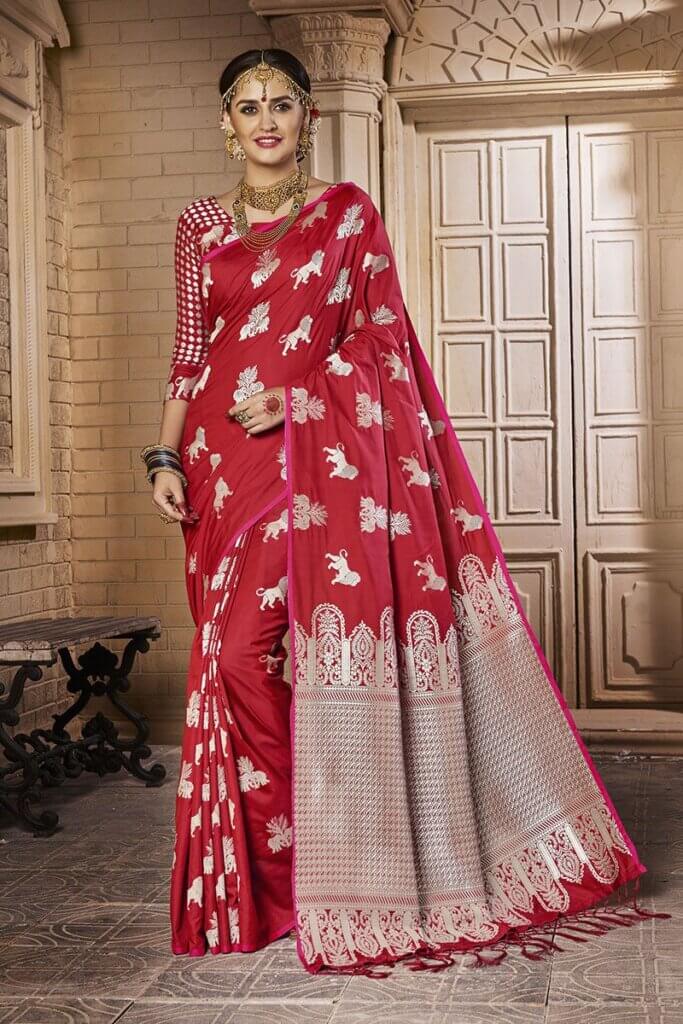
When it is about traditional Indian clothing, the saree is the most popular option and a must-have for any Indian woman’s wardrobe. “There was a time when only nine-yard sarees were worn by women. Women nowadays have more alternatives, and they can choose from a 4 yard to a 9 yard long saree.” During worship and religious occasions, ladies in rural and cities typically wear nine-yard saree.
In different parts of India, the pallu of a sarees is also draped differently. It is draped on the left shoulder in some locations and the right shoulder in many others. Some women cover their heads with the pallu out of respect for elderly people or drape it over their shoulders while conducting daily chores, according to family tradition.
Despite the fact that western lifestyles and clothing have made significant inroads into Indian society, the saree appeal remains a well-established fact. During significant rituals such as weddings, religious ceremonies, and parties, there is no substitute for a sarees. When it comes to India’s most well-known bridal apparel, the saree is unmistakable.
Adoption Of Sarees By All Religions in India:
Because India has such a diverse cultural landscape, many Indian Christian brides decide to a simple white saree with a white blouse rather than their traditional Christian wedding gown. The end of the sarees or a scarf, usually made of the same sarees material, covers the head.
A South Indian Christian bride traditionally dresses in bright colours, such as red, green, or yellow. Benaras and Bangalore are well-known for their silk wedding sarees (Mysore Silk). Cotton Handloom Saree from Calcutta (Valkalam) and South India are also popular (crepe). Swiss cotton/spun saree are another popular product in the market. Poonam, Micro Madhushree, Chiffon, and Georgette are some of the most well-known art silk sarees from Surat, which are used as bridal sarees.
Meaning Associated To Saree Design, Fabric And Color
“The traditional saree, in the shape of fabric with diverse colours and distinct designs, has a significant importance. The sarees numerous motifs and patterns represent the beliefs, norms, and habits of people from various parts of India.”
Paisley and fish were symbols of fertility, wealth of food, and offspring. These motifs were typically imprinted on saree worn by individuals who lived along the coast. Elephant designs were used to represent water, fertility, riches, and good fortune. It also represents Lord Ganesha, who is known for his ability to remove barriers. The peacock on the fabric symbolised a person’s physical and emotional strength. The Conch was also a Gods’ sign, and it symbolises the war bugle.
Importance Of Color Of A Saree
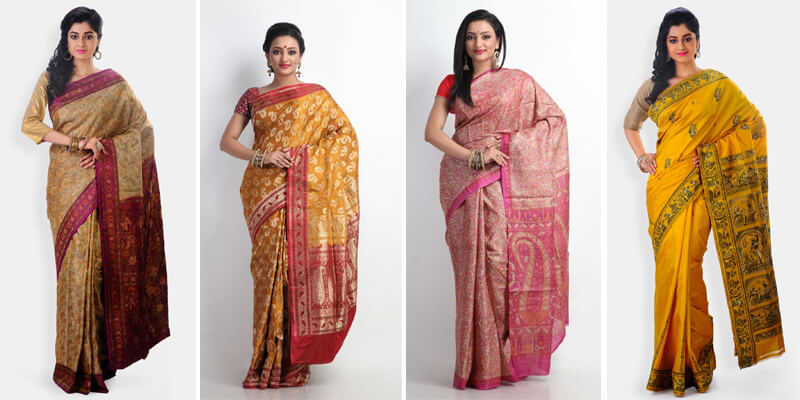
The usage of colours in saree is equally significant. Saree of various hues represent many characteristics, qualities, and topics. Typically, a saree is chosen based on the appropriate hue for the day. People prefer to Indian red or maroon sarees on Tuesdays, green on Wednesdays, yellow on Thursdays, and black sarees on Saturdays. Indians place a high value on numerology and astrology. Women choose the colour of their saree based on astrological calculations. At significant events such as weddings, parties, and other memorable moments, red coloured saree are draped. Women choose to India red on various occasions because it indicates dominance and passion.
Blue saree are associated with peace, tranquilly, and serenity. It’s appropriate for a lady who wishes to stand out in a crowd. Orange symbolises freshness and brightness, therefore orange saree are typically worn when the weather is bright and sunny. Yellow is the colour of hope, brightness, and love. Yellow saree are ideal for daytime functions and ceremonies since they make you appear bright and clever.
The colour green is connected with nature and greenery, and it symbolises fertility. A green saree symbolises prosperity and is perfect for celebrations and outdoor activities. The colour black is associated with elegance and power. It’s appropriate for any occasion. For formal meetings and evening events, a black saree is perfect.
Pink is connected with femininity and romance. Because of its tight link with romance, it is a good pick for a date. The colour white is associated with serenity, purity, tranquilly, and spirituality. Saree in white are ideal for festivals, parties, and daytime activities.
Conclusion:
Designer saree India is now popular in international markets such as Europe, the United Kingdom, and the United States, as well as Brazil, Indonesia, Malaysia, and Singapore, because people can now shop for Indian online from a variety of reputable online stores and e-commerce sites.

